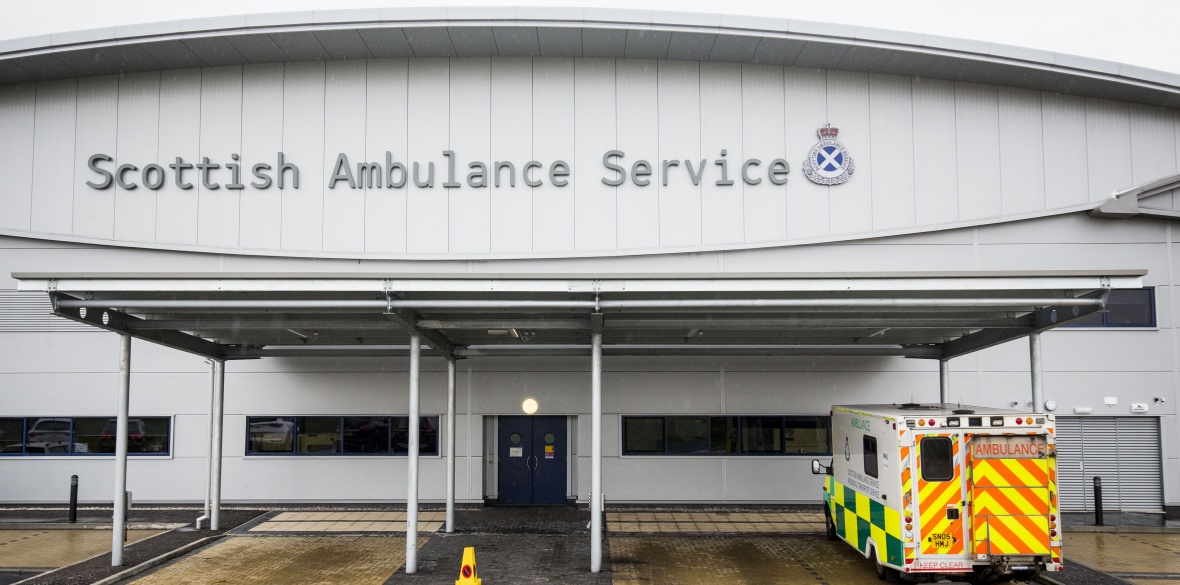This is the last article you can read this month
You can read more article this month
You can read more articles this month
Sorry your limit is up for this month
Reset on:
Please help support the Morning Star by subscribing here
LAST WEEK senior doctors in A&E departments in NHS Grampian went public about staff shortages which they claimed were causing unacceptable delays and avoidable deaths.
The Aberdeen- and Elgin-based doctors say their complaints of lack of senior staff have been ignored since 2021 and have now resorted to using the formal whistleblowing structure to try and get something done.
It’s a stark example of the pressures in NHS Scotland. Pressures the Scottish government shows little sign of being able to tackle.
The situation in the north-east involves a shortage of senior registrars but they are hardly the only unfilled vacancies.
Figures published in June showed 446 consultant posts and over 1,000 allied health professionals posts were unfilled. Nursing vacancies are running at over 5,500.
While these are the staffing issues most likely to generate alarm, the crisis in the workforce extends beyond nurses and medics.
Recently one NHS board in Scotland was working to secure a recruitment and retention premium for payroll staff. There are significant labour market shortages in other administration/clerical and support posts.
This chronic understaffing across the workforce can’t be separated from underfunding. It is a practice in health boards to drag vacancies to save money in the hope that existing staff can do more for less. But if the situation can’t be separated from underfunding it can’t be wholly put down to it either.
Workforce planning is wholly inadequate often failing to clearly identify known pressures or solutions.
Perhaps the most obvious demonstration of this shortcoming is shown in the £350 million bill for agency staff racked up in just 20 months.
There has been a 2,000 per cent increase in private contractors over the last decade — from £3.9m in 2012 to £88.9m today.
These eyewatering sums both reflect and contribute to the staffing crisis. There is much anecdotal evidence that nursing staff are leaving permanent jobs to work on the bank, to gain flexibility over their working time. Or to work for agencies, which give higher rates of pay and flexibility. Incidentally policies exist across the NHS to encourage flexible working, but there is little consistency in how they are applied.
This represents not just a managerial failure, but also a political failure on the part of the SNP which has been running Scotland’s NHS for the last 15 years.
Funding for agency and bank staff would be far more effective if spent on improved overtime rates for nursing and other staff, rather than helping drive up the profits of staffing agencies.
Equally even if the idea that some staffing agency use is going to be a feature is accepted, there is no evidence that the NHS as the virtual monopoly customer is using that status to bring prices down.
The SNP/Green Scottish government is pledging a 4 per cent year-on-year real-terms increase in health and social care system funding.
Some questions remain however. The same Medium Term Financial Strategy document containing this promise also points out that next year alone the gap between Scotgov’s resource spending plans and its expected income is more than a billion pounds.
It is legitimate to ask whether, even if the pledge is delivered, it can be done without savage cuts to other services. This in itself would limit the impact of any increase.
To take one at first seemingly unrelated policy area — a major issue in the midwife shortage besting the Highlands is a lack of affordable housing. Robbing Peter to pay Paul is not a workable strategy in public services.
The Scottish government places much emphasis on service redesign to solve issues in health and social care.
There are few who would deny that there is a role for looking at how things are done.
Bed configuration in Scotland assumes that the average length of stay in an acute hospital bed will be three days — this assumes that health and social care services, community services (GPs, community mental health service, addiction services and other community support) will be able to meet the demand and provide services for patients in their own homes.
All too often this doesn’t happen. Nor is it certain that, should a more realistic configuration be devised, it would be cheaper.
Confidence that the Scottish government’s shambolic National Care Service Bill, which urges the removal of services from councils and the NHS to go into a market-based system, will remedy this is negligible.
More productive would be an emphasis by the Scottish government on ensuring decent funding by using the tax-raising powers they loudly demanded and were given years ago.
These — by taxing property, inheritance, land — could raise billions. As yet the Scottish government’s approach to altering its own circumstances and, by extension, those of staff and patients in the NHS has been more akin to homeopathy than intensive treatment.












